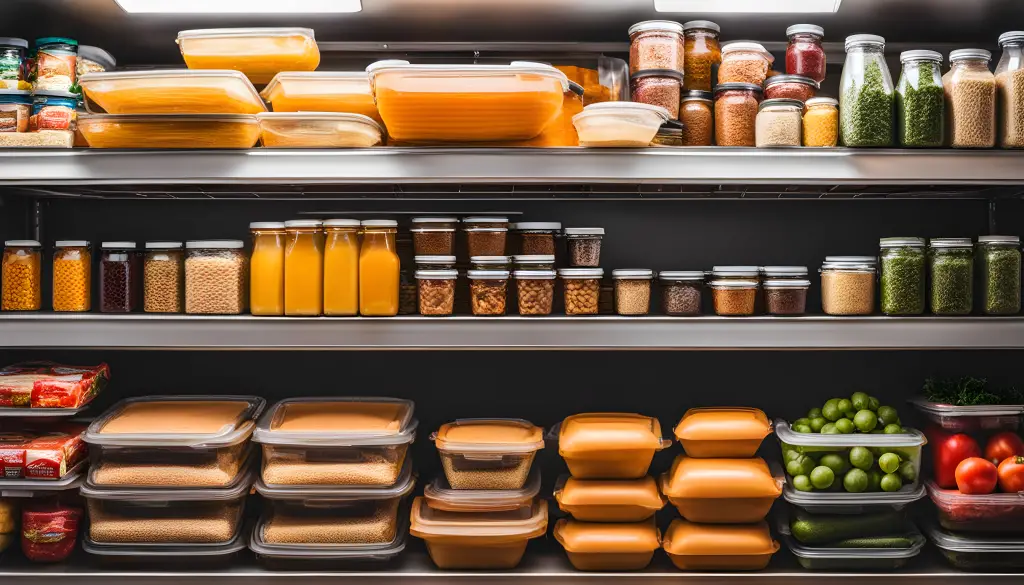Effective kitchen inventory management is the key to streamlining meal preparation, reducing food waste, and making smart grocery shopping choices. In this article, we’ll explore how to keep track of kitchen supplies, reduce food waste, and shop smarter for your culinary needs.
What is kitchen Inventory Management?ChatGPT
Kitchen inventory management refers to the systematic process of tracking and controlling the food and supplies within a kitchen or food-related establishment. This practice is essential for ensuring efficient operations, minimizing waste, and maintaining optimal stock levels.
The primary goal is to have the right amount of ingredients and supplies on hand to meet the demands of the kitchen while avoiding overstocking or running out of essential items.
Key components of kitchen inventory management include:
- Inventory Tracking: Regularly monitor and record the quantities of all items in stock. This can be done manually or using specialized software to streamline the process.
- Ordering and Receiving: Efficiently manage the procurement process by placing timely orders for necessary items and accurately receiving and verifying deliveries.
- Categorization and Organization: Group items logically and maintain a well-organized storage system. This helps in locating items quickly and reduces the risk of spoilage or expiration.
- Supplier Management: Develop and maintain positive relationships with suppliers to ensure reliable and timely deliveries. Negotiate favorable terms and prices to optimize costs.
- Rotation and First-In, First-Out (FIFO): Implement FIFO principles to use older inventory first, reducing the chances of items expiring or becoming obsolete.
- Waste Reduction: Minimize waste by accurately forecasting demand, using proper storage techniques, and closely monitoring expiration dates.
- Technology Integration: Utilize inventory management software or point-of-sale systems to automate tracking and streamline the entire process. This can help in generating reports, analyzing trends, and making data-driven decisions.
- Training and Communication: Ensure that kitchen staff are trained in inventory management procedures and maintain clear communication channels regarding stock levels, usage patterns, and any issues that may arise.
Effective kitchen inventory management is crucial for maintaining cost control, enhancing overall efficiency, and delivering consistent quality in food service establishments. By implementing sound inventory practices, businesses can optimize their resources, reduce waste, and improve the overall profitability of their operations.
Kitchen Inventory Management Software
Kitchen inventory management software is a specialized type of software designed to facilitate and automate the tracking, control, and optimization of inventory in a kitchen or food-related establishment.
This software streamlines various aspects of inventory management, helping businesses in the food industry to efficiently handle their stock, reduce waste, and ensure smooth operations. Here are some common features and functionalities found in kitchen inventory management software:
- Real-time Tracking: Provides real-time visibility into the inventory levels of ingredients, supplies, and other items.
- Ordering and Procurement: Streamlines the ordering process, allowing users to create purchase orders, track deliveries, and manage supplier relationships.
- Barcode Scanning: Enables quick and accurate tracking of items through the use of barcode scanning technology.
- Inventory Alerts: Sends notifications or alerts when inventory levels fall below a set threshold, helping to prevent shortages.
- Categorization and Organization: Allow for the categorization and organization of inventory items, making it easier to locate and manage stock.
- Integration with Point-of-Sale (POS) Systems: Integrates with POS systems to synchronize sales data with inventory levels, providing a more accurate picture of stock usage.
- Reports and Analytics: Generates reports and analytics to help businesses analyze usage patterns, identify trends, and make data-driven decisions.
- FIFO and Expiry Tracking: Supports the implementation of FIFO principles and tracks expiration dates to minimize waste.
- Multi-location Support: Scales to accommodate businesses with multiple locations, providing centralized control and visibility.
- User Permissions: This allows businesses to set user roles and permissions, controlling access to sensitive inventory data.
- Cloud-Based Accessibility: Offers the flexibility of cloud-based access, allowing users to manage inventory from multiple devices and locations.
Popular kitchen inventory management software solutions include:
- MarketMan
- BlueCart
- PeachWorks
The choice of software depends on the specific needs and scale of the food service establishment. Implementing such software can significantly improve efficiency, reduce manual errors, and contribute to better overall cost management in the kitchen.

Keeping Track of Kitchen Supplies
Inventory List: Start by creating an inventory list of the items in your kitchen. This includes pantry staples, spices, canned goods, and refrigerated items. Regularly update this list as you use and restock items.
Organization: Systematically organize your kitchen supplies. Keep similar items together in your pantry and cabinets to make it easier to find what you need.
Labeling: Use labels on containers to indicate expiration dates or to track when items were opened. This helps you prioritize using items before they go bad.
First In, First Out (FIFO): Practice the FIFO method. Use older items before newer ones to ensure that nothing goes to waste.
Reducing Food Waste
Meal Planning: Plan your meals around the ingredients you have on hand. This reduces the likelihood of items expiring before you use them.
Repurpose Leftovers: Get creative with leftovers. Turn last night’s roasted vegetables into a soup or use leftover chicken for sandwiches. This reduces food waste and saves you time.
Composting: Consider composting food scraps that can’t be used. This is an eco-friendly way to reduce food waste and benefit your garden.
Regular Check-ins: Routinely inspect your inventory for items nearing expiration. Plan meals that incorporate these items to avoid waste.
Smart Grocery Shopping
Shopping List: Always create a shopping list before heading to the store. Stick to your list to avoid impulse purchases.
Buy in Bulk: For non-perishable items that you use frequently, consider buying in bulk. This often reduces the cost per unit and minimizes the need for frequent shopping trips.
Seasonal Shopping: Buy fruits and vegetables that are in season. They’re usually fresher, more affordable, and have a lower environmental impact.
Meal Planning: Plan your meals, taking into account what you already have in your inventory. This guides your grocery shopping and reduces the likelihood of overbuying.

Top 10 Items for Smart Kitchen Inventory Management
- Inventory List Template
- Label Maker
- Clear Food Storage Containers
- FIFO Labeling System
- Compost Bin
- Reusable Produce Bags
- Shopping List Notepad
- Dry-Erase Fridge Calendar
- Meal Planning App
- Spice Rack Organizer
Conclusion
Effective kitchen inventory management is a recipe for an efficient kitchen. By keeping track of kitchen supplies, reducing food waste, and shopping smarter, you not only save time and money but also contribute to a more sustainable and eco-friendly kitchen. You’ll discover that a well-organized and well-stocked kitchen is the key to more enjoyable and less stressful meal preparation.

